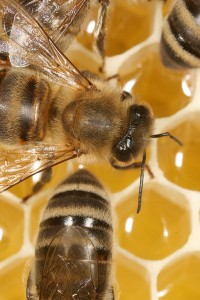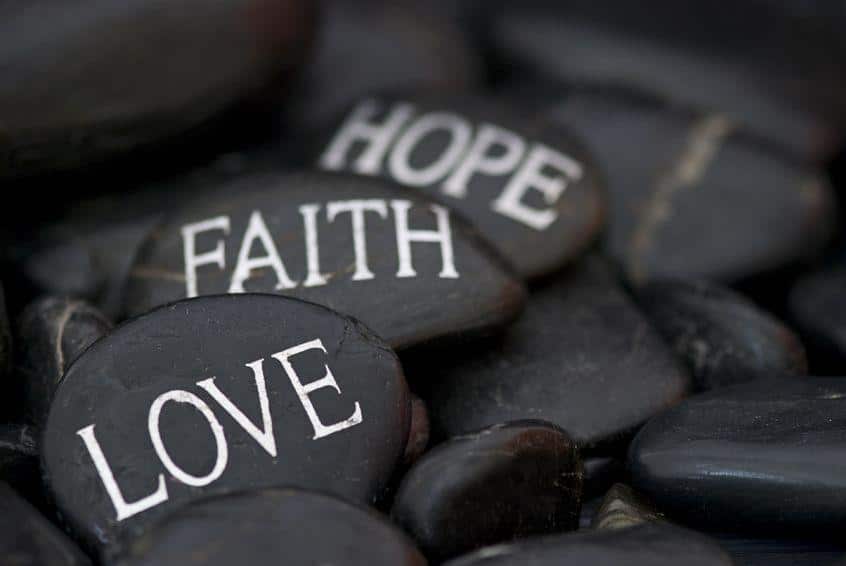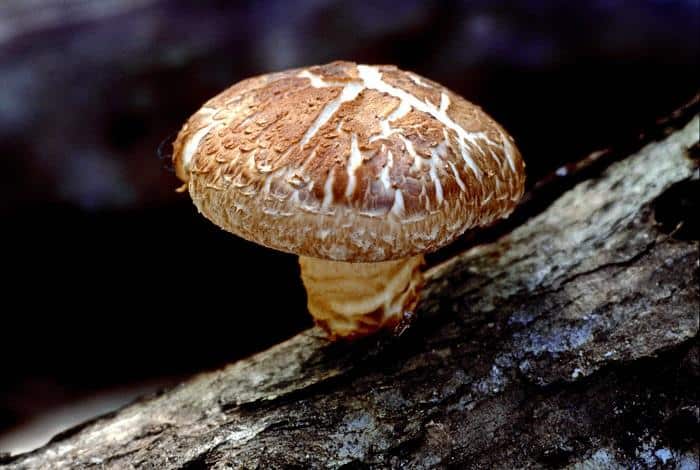Honey is one of nature’s most delightful creations. This gooey, sticky liquid that can range from dark amber to light gold in color is a miracle creation made by our friends the honeybees. Honey is not only tasty, it is also very good for you. It is a natural source of sweetness, uncontaminated by human processing. If all you have ever done with honey is put a little on your hot cereal or in your tea, you are in for a surprise. There are many other uses for honey from food to beauty to health and first aid.
How We Get From Honeybees To Honey
 The whole process begins with what you see bees doing throughout the summer: collecting nectar. When bees land on flowers, it’s not just to smell them. They are taking the nectar, which is mostly sugar and water, back to the hive. The relationship between bees and flowers is mutual. While gathering nectar, the bees inadvertently pick up pollen and carry it from plant to plant, helping them to create new plants.
The whole process begins with what you see bees doing throughout the summer: collecting nectar. When bees land on flowers, it’s not just to smell them. They are taking the nectar, which is mostly sugar and water, back to the hive. The relationship between bees and flowers is mutual. While gathering nectar, the bees inadvertently pick up pollen and carry it from plant to plant, helping them to create new plants.
Bees convert nectar into honey because on its own, nectar will simply ferment and become inedible. The first part of the transformation occurs as the worker bees are out collecting nectar. They suck up the nectar from each flower using its proboscis, like a straw. It goes into their honey stomach where enzymes get to work changing the composition of the sugars in the nectar. When a worker bee has a full stomach, it heads back to the hive and regurgitates its contents.
In the hive, other bees ingest the nectar that has already started to become honey in the stomach of the worker bee. Their stomach enzymes further change the nectar into honey. They then regurgitate it into the combs of the hive for storage. Once the honey is in the comb, the bees flap their wings in order to fan the honey. This causes water to evaporate and completes the process by thickening the honey to the consistency with which we are all familiar. The bee then caps off the individual cell with wax. One bee will make less than a half a teaspoon of honey in its lifetime, but together the colony can make more than 200 pounds per year.
A Guide To Creating, Harvesting, And Cooking With Natural Honeys…
How To Use Your Honey
The best way to get honey is to purchase from a local apiary. Of course, if you keep your own hives, that’s even better. Beekeeping is a big commitment, though, so for the sake of time, find someone local and support your area economy as well as the neighborhood bees. Some of the bees that drink from your flowers might even be making the honey you buy.
As you think of new ways to use honey, keep in mind that children under twelve months of age should not eat honey. There is a slight chance that honey may contain harmful bacteria, and the immune system of little ones is not up to the challenge of fighting off an infection.
- Treat seasonal allergies. The findings from scientific studies are inconclusive so far, but old wisdom says that a spoonful of local honey a day can alleviate your pollen allergies. When bees are taking up nectar for making honey, they also inadvertently pick up pollen. Some of it gets transferred to other flowers at stops along the way, but some makes it back to the hive. If that pollen gets into the honey and is the same pollen that is around you every day, the honey can act like a vaccine. If you eat the small quantity of pollen that is in the honey every day, you introduce your allergen to your body slowly and you grow accustomed to it. This is the same concept behind a medical treatment for allergies called immunotherapy. For it to work, you need to get honey that is made as close to you as possible so that it contains the troubling pollen.
- Sugar substitute. Instead of processed and refined white sugar from the supermarket, use honey to sweeten your foods. It is much better for you and lends a unique and delicious flavor to whatever you eat. Use honey to sweeten your tea, cereal, and fruit instead of sugar. When replacing sugar with honey in recipes, use these general guidelines:
- Use ¾ of a cup of honey for every cup of sugar called for in a recipe
- Reduce the total of all other liquids in the recipe by ¼ cup if you are using at least a cup of honey
- When baking, reduce the oven temperature by 25 degrees and keep an eye on it. Recipes with honey will brown more quickly.
- If baking soda is not in the recipe already, include ¼ of a teaspoon per cup of honey.
- Dietary supplement. Unlike refined sugar, honey contains several nutrients in addition to the sugars that make it taste sweet. Exactly what your honey contains depends on where it was made, but it should have vitamin C, iron, calcium, and fiber. When you use honey in place of sugar, you increase your intake of important nutrients.
- Soothe your sore throat. Honey has long been used for soothing the throat. Drink hot herbal tea with a tablespoon of honey as often as you like to make your throat feel better. Of course, do see a doctor if your symptoms persist. Honey only soothes; it does not cure.
- Relieve coughing. Medical research has actually proven that honey can suppress coughs as well as if not better than synthetic cough medicines. A Penn State study found that children who were given honey thirty minutes before bed time coughed less than those given dextromethorphan, a cough suppressant.
- Hair treatment. Because the bees took most of the water out of the honey, it is a natural humectant. This means it grabs and holds on to water molecules. As such, honey can be a great conditioning treatment for your hair. It will soften and moisturize your hair. Massage it in and leave it on for ten minutes. Cover your hair with a shower cap on to avoid getting a bunch of debris stuck to your head in the meantime. Then wash and rinse as usual. You can warm the honey up before using to make it easier to work with or even mix it with a little vegetable oil.
- Facial. As with your hair, honey can be a great moisturizer for your skin. As a humectant, honey draws in and holds water on the surface of your skin, making it appear softer and giving you a natural glow. It may even be able to reduce acne and redness in your skin. Just massage honey onto your clean skin and rub in circular motions for a few minutes. Be sure your hair is out of the way if you are not planning on doing a hair treatment as well. Rinse with warm water and enjoy the glow.
- Hair and skin lightener. Honey acts, to a small degree, like bleach. If you have dark hair and use a honey treatment, you may find that your hair is a shade lighter afterwards. It can brighten up blond hair and even lighten that pesky facial hair. Just leave it on skin or hair for ten minutes or so and watch what happens.
- Burn and scrape ointment. Honey has antimicrobial properties, which makes it a great ointment for burns, minor cuts, and scrapes or abrasions. It promotes healing at the site and allows the wound to heal faster. It also soothes the skin and reduces pain. Of course, if you are dealing with a serious wound, or one that seems to be infected, seek professional medical help.
- Make and enjoy mead or honey wine. Mead is not just an archaic beverage from Medieval Europe—it is a tasty drink that you can make at home. If you have ever made your own beer or wine, making mead is not much of a stretch. There are many different recipes, but essentially, mead is fermented honey and water. You can include a grain mash as well or add in hops, spices, or fruits for additional flavor.
©2012 Off the Grid News











